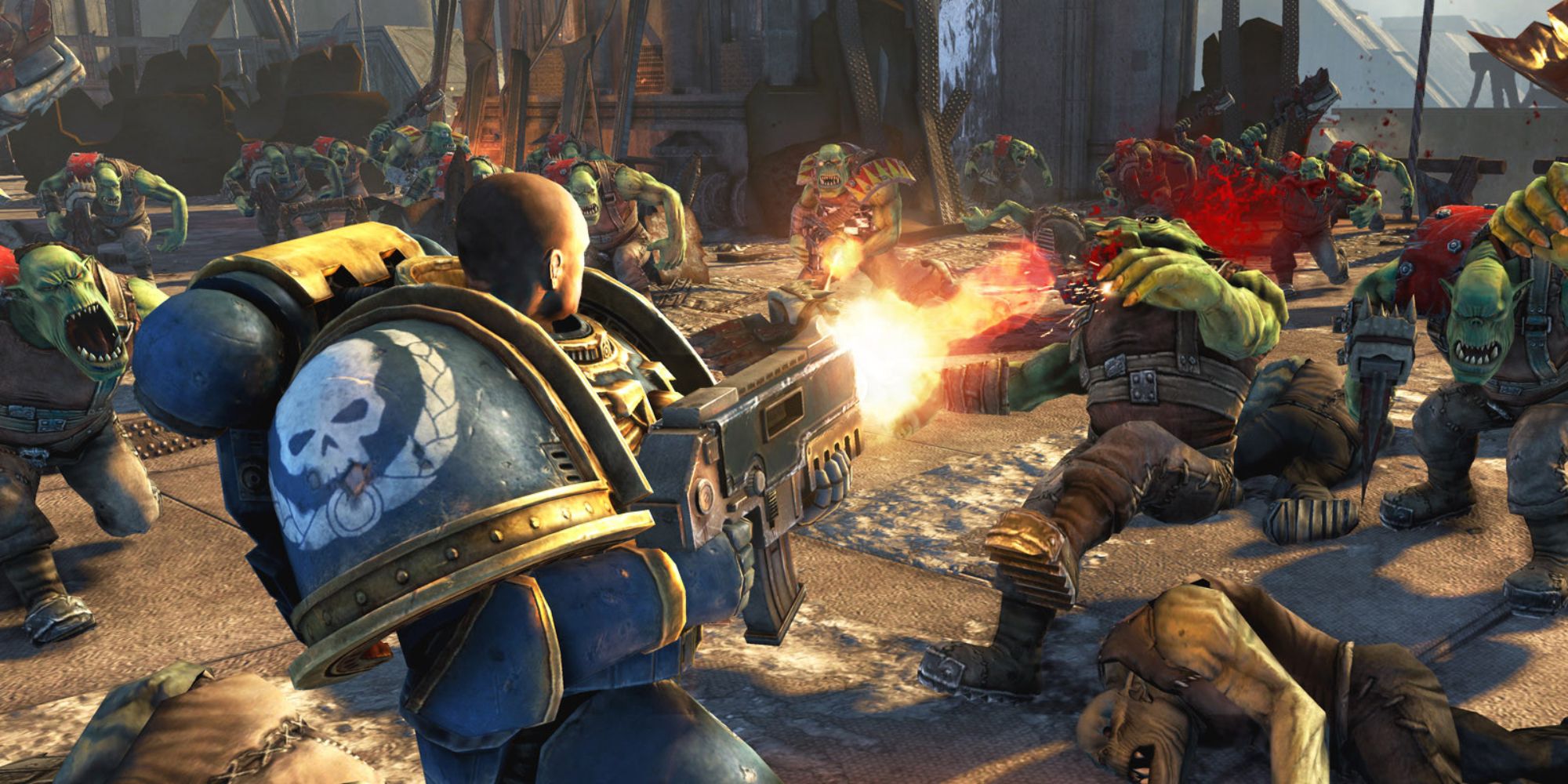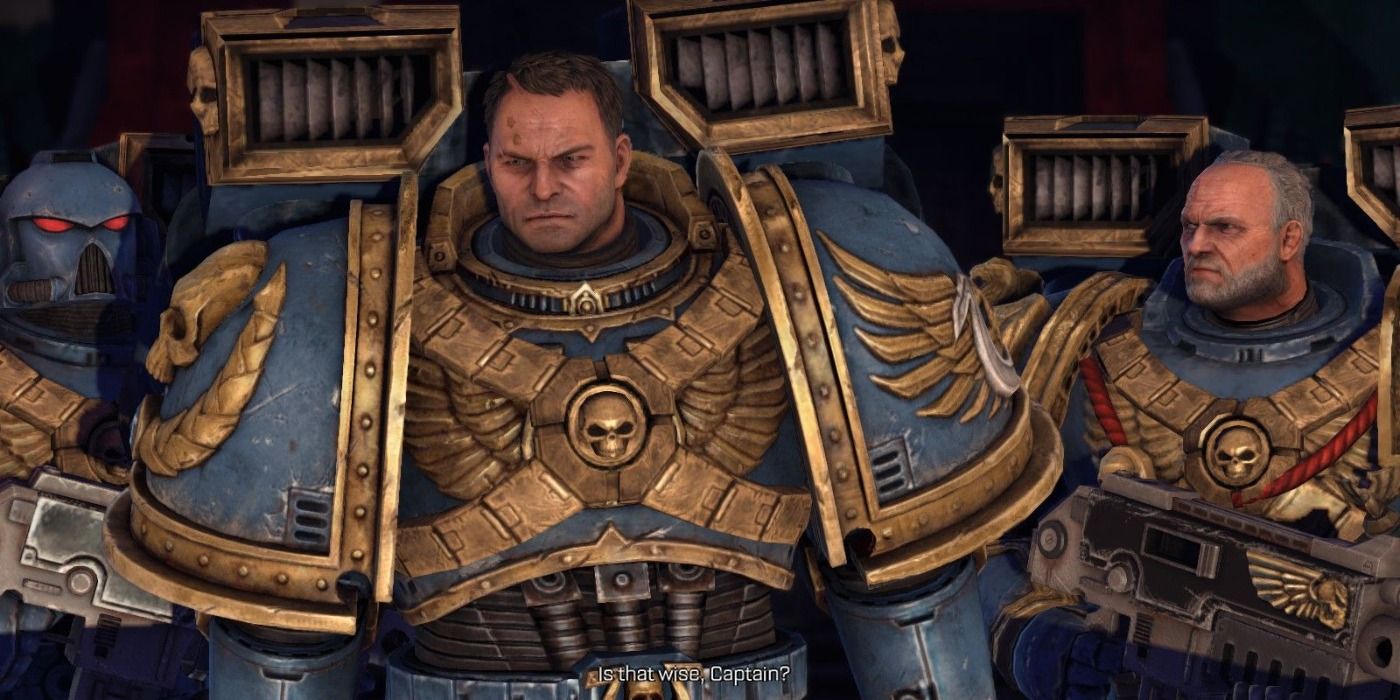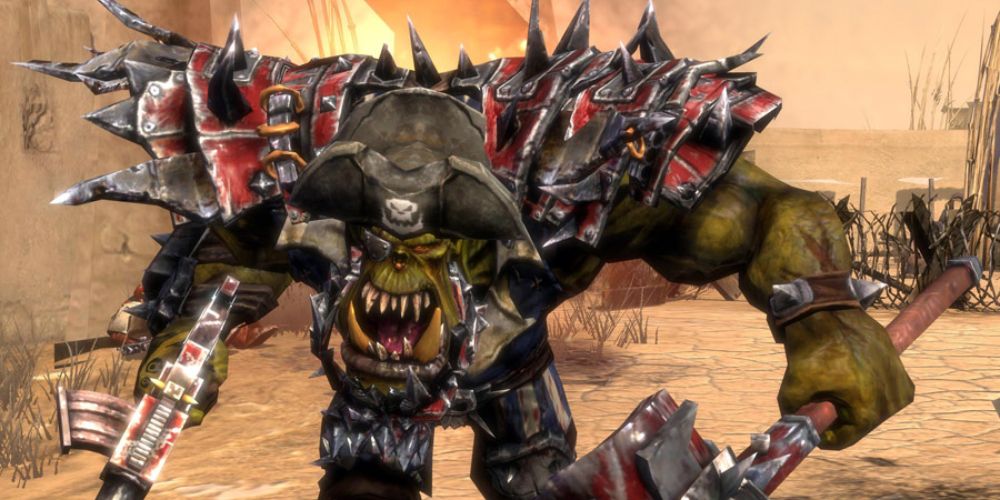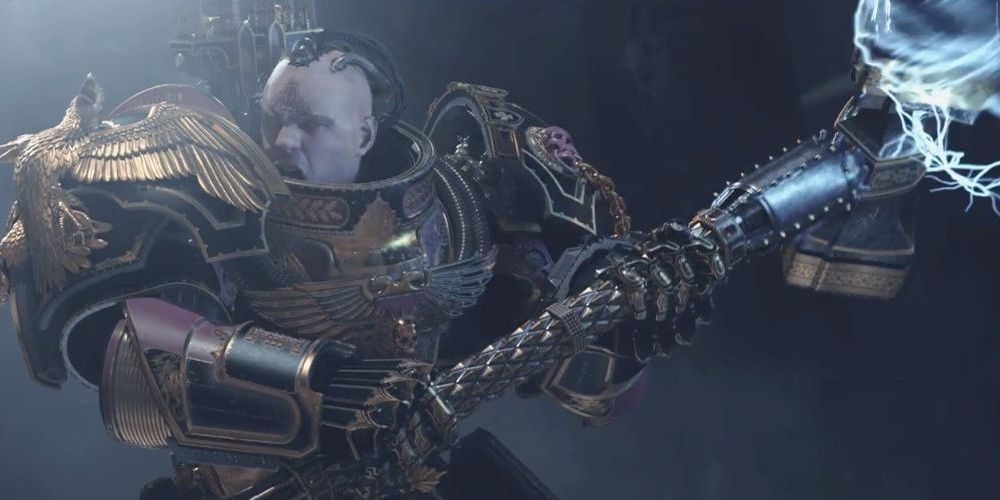Warhammer and Warhammer 40,000 have legions of fans around the world. The tabletop wargaming franchise has expanded into novels, comics, and video games for decades. Whether you're a lore fiend, a tactician, an avid miniature painter, or all three, Games Workshop's famous worlds have something for you.
With the recent knighting of one of Games Workshop's founders, it's a great time to look back on how the company and its flagship franchise got started. This is the origin of the Imperium, the Ruinous Powers, and the other iconic forces of the Warhammer universe.
The Founding Of Games Workshop
Much of the early story is detailed in Shannon Appelcline's book Designers & Dragons: A History of the Roleplaying Game Industry. In 1975, British roommates Steve Jackson, Ian Livingstone, and John Peake started a company in their garage.
They planned to make handcrafted game sets - chess, backgammon, and the like. As such, they called their company Games Workshop. Livingstone handled the marketing, Jackson created artwork and published a hobby magazine to bring in extra income, and Peake made the products. Jackson's magazine, called Owl & Weasel, was sent to hobbyists, publishers, and retailers, and it encouraged readers to write in with their recommendations for games that could be featured in the publication.
The Steve Jackson in this article is not the same Steve Jackson who founded Steve Jackson Games in the United States.
Early on in their business, the trio got a letter from Brian Blume, a partner in a small American publisher called Tactical Studies Rules (or TSR for short). Blume sent Games Workshop a copy of TSR's new game which had been published the year before - Dungeons & Dragons. Blume just wanted the game featured in the magazine for advertising purposes, but Jackson and company loved the game so much that they offered to distribute the game in the United Kingdom.
Struck By Lightning
Blume agreed to send Games Workshop six copies of D&D and gave them three years of exclusive rights to sell the game in their country. The original print run of Dungeons & Dragons was only a thousand copies, so Blume was hesitant to send too many across the pond at once if there wasn't a market for it. Jackson dedicated an entire issue of Owl & Weasel solely to D&D, while Peake and Livingstone organized a local convention called Games Day at which they demonstrated D&D to the British public for the first time. As a result, they quickly had far more than six orders from gamers eager to try the new game.
Games Workshop's success as TSR's UK distributor quickly outgrew their in-house operation. John Peake, seeing that they were decidedly no longer in the handcrafted board game business, left the company in 1976, leaving Ian Livingstone and Steve Jackson to fully pursue their unexpected new venture. The two went to Gen Con in the United States that year to network with other publishers, and soon had a large library of American games they made available to British gamers. In fact, they became so successful in the UK that TSR founder Gary Gygax would later claim in an interview that a merger between his company and Games Workshop had at one point been on the table.
Books & Miniatures
To reduce costs and make their products more accessible to customers, Games Workshop negotiated deals with their clients allowing them to print and publish licensed copies of their games in the United Kingdom. This would save on shipping and import costs and lower the price to consumers. With plenty of product now in-hand and the ability to print as much as they needed, Livingstone and Jackson opened the first Games Workshop store in Hammersmith in 1978. They discontinued Owl & Weasel in favor of a full-color production called White Dwarf and formed a subsidiary company - Citadel Miniatures - to manufacture the fantasy character figurines that were popular with D&D players (Appelcline 2014).
By 1980, Games Workshop was opening its second location and developing its own games in addition to the American titles it was licensed to publish. One such game, released in 1983, was Warhammer Fantasy Battle.
The Beginning Of Warhammer
Bryan Ansell, Richard Halliwell, and Rick Priestly were designers at Citadel Miniatures who developed Warhammer, a blend of D&D and the tabletop wargames that came before it. Warhammer's success over the next few years, combined with Livingstone and Jackson wanting to focus on other projects, led to Ansell being made Managing Director of Games Workshop in 1985.
Ansell's focus was on his creation, and the company released not only new editions and supplements for the game but its own RPG system, Warhammer Fantasy Roleplay. The dark and brutal fantasy setting struck a chord with players, and both the RPG and the wargame stayed successful throughout the 1980s.
The Grim Darkness Of The Far Future
Rick Priestly, one of the original Warhammer creators, developed Rogue Trader: Warhammer 40,000, a sci-fi take on their fantasy universe. Space elves, space orks, and heavily armored Space Marines battled for dominance in a war-torn future. The game was launched on Games Day 1987, and it was a far cry different from the game most players know today.
For starters, despite being a war game, the preset scenarios were adjudicated by a Game Master like in a roleplaying game. It was a lore-heavy battle game with a roleplaying focus, but players were intrigued by the lore. Who were the space elves? How did orks achieve spaceflight? What happened to make the future so grim?
As interest in Warhammer 40k (as it came to be known) mounted, more supplements were released to expand on the factions and the lore until the time came that a second edition was necessary. Headed by Andy Chambers, Warhammer 40,000 Second Edition launched in 1993, creating the hopeless galaxy that players know today.
Global Expansion
By the time 40k was catching on, it had become clear that Games Workshop was a completely different company than had been started in 1975. Ready to move on, Livingstone and Jackson sold their stake in Games Workshop and the company began to focus entirely on miniatures and wargaming. Over the next few decades, Games Workshop Hobby Centres sprang up in countries across the world, focused entirely on building communities and customer bases for Warhammer and Warhammer 40,000. With the release of the Lord of the Rings films from 2001-2003, Games Workshop acquired the rights to produce a miniatures game based on that franchise as well.
By the mid-2010s it was apparent that 40k was far and away the most popular of GW's three lines. In an attempt to shake things up, Games Workshop introduced the End Times event for Warhammer Fantasy in 2014, destroying the Old World and paving the way for a new flagship product, Warhammer: Age of Sigmar. Released in 2015, the reincarnation of Warhammer Fantasy was designed to capture the things that made 40k popular, but longtime fans of the original series were dismayed at seeing it discontinued.
Warhammer 40,000 is currently in its ninth edition, and Age of Sigmar is in its second. Ian Livingstone, in recognition for his contributions to British culture through gaming, was knighted by Queen Elizabeth II as part of her New Year's Honours in 2022. Games Workshop continues to focus almost exclusively on its core properties, with an increased focus on licensing the popular settings. Warhammer Fantasy has even seen a revival through the Total War: Warhammer series.



.jpg)

